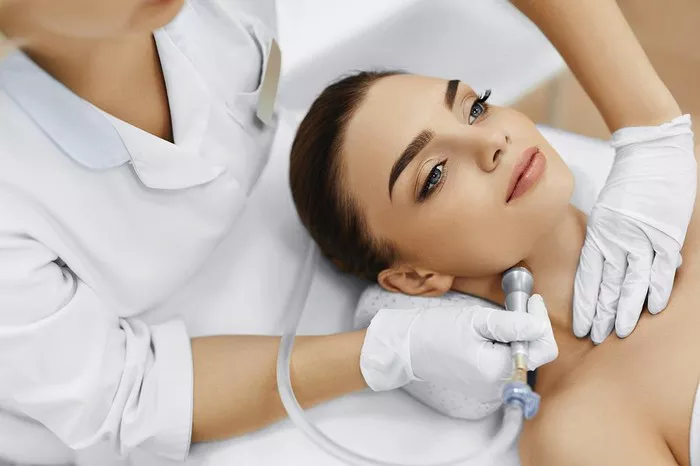As the natural aging process takes its course, the skin undergoes changes that lead to the development of wrinkles and fine lines. In the world of cosmetic enhancement, there are various options available to address these signs of aging. One common approach is the use of dermal fillers, which can effectively fill in wrinkles on the face and restore a more youthful appearance. This article explores the different types of fillers, their application techniques, considerations for selecting the right filler, and the overall process of achieving smoother, more rejuvenated skin.
Understanding Dermal Fillers
Dermal fillers, also known as injectable fillers or soft tissue fillers, are minimally invasive treatments designed to restore volume and plumpness to the skin, effectively reducing the appearance of wrinkles, folds, and hollow areas. These fillers are typically made from substances that occur naturally in the body, such as hyaluronic acid, collagen, and calcium hydroxylapatite. When injected into targeted areas, they work by replenishing lost volume and stimulating collagen production, resulting in smoother, more youthful-looking skin.
Types of Dermal Fillers
Hyaluronic Acid Fillers: Hyaluronic acid (HA) is a naturally occurring substance in the skin that retains moisture, giving it a plump and hydrated appearance. HA fillers are versatile and can be used to fill in fine lines, wrinkles, and deep creases. They can also enhance lip volume and contour.
Calcium Hydroxylapatite Fillers: These fillers contain calcium microspheres suspended in a gel. They are often used for deeper wrinkles and areas with more significant volume loss, such as the cheeks and nasolabial folds.
Poly-L-Lactic Acid Fillers: Poly-L-lactic acid stimulates collagen production over time, leading to gradual improvements in skin texture and volume. These fillers are suitable for treating deeper wrinkles and restoring facial fullness.
Collagen Fillers: While less commonly used today, collagen-based fillers can still be an option for some patients. They provide immediate results but might require more frequent touch-ups compared to other filler types.
Application Techniques
Dermal fillers are administered by skilled medical professionals, typically dermatologists or plastic surgeons. The injection technique and placement are crucial to achieving natural-looking results. The procedure involves the following steps:
Consultation: During an initial consultation, the practitioner assesses the patient’s facial structure, skin condition, and areas of concern. The patient’s goals and expectations are also discussed to determine the most suitable filler and treatment plan.
Preparation: Before the procedure, the treatment areas are cleansed, and a topical numbing cream or local anesthetic may be applied to minimize discomfort.
Injection: The filler is carefully injected into the targeted areas using a fine needle or cannula. The practitioner ensures precise placement and symmetry for optimal results.
Massage and Evaluation: After injection, the practitioner may gently massage the treated areas to evenly distribute the filler. The patient’s facial expressions are assessed to ensure a natural outcome.
Recovery: Dermal filler injections usually involve minimal downtime. Some temporary swelling, redness, or bruising might occur at the injection sites, but these effects typically subside within a few days.
Choosing the Right Filler
Selecting the most appropriate filler involves considering factors such as the treatment area, the type of wrinkles, and the desired duration of results. For finer lines and delicate areas, hyaluronic acid fillers are often preferred due to their versatility and reversible effects. For deeper wrinkles or areas requiring more significant volume restoration, calcium hydroxylapatite or poly-L-lactic acid fillers might be recommended.
Considerations for Patients
Consultation: A thorough consultation with a qualified practitioner is essential. They will evaluate the patient’s skin, discuss expectations, and recommend the appropriate filler type and treatment plan.
Realistic Expectations: While dermal fillers provide noticeable improvements, they are not permanent solutions. Results typically last anywhere from 6 months to 2 years, depending on the filler used.
Aftercare: Following the procedure, patients should avoid excessive sun exposure, strenuous activities, and certain medications that can increase the risk of bruising.
Touch-Up Treatments: Depending on the chosen filler, patients might need periodic touch-up treatments to maintain the results.
Conclusion
Dermal fillers offer an effective and non-surgical solution for filling in wrinkles on the face, restoring a more youthful appearance, and boosting self-confidence. With various types of fillers available, each with its unique advantages, patients have the opportunity to tailor their treatment totheir specific needs and goals. A personalized consultation with a skilled medical professional is the first step toward achieving smoother, rejuvenated skin through dermal filler treatments. By understanding the different types of fillers, the application process, and the considerations involved, individuals can make informed decisions and embark on a journey to a more youthful and revitalized facial appearance.


